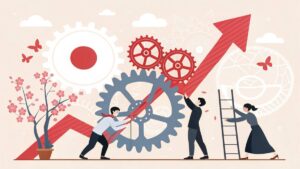In the past, the concept of safety was often narrowly defined, primarily concerned with physical protection from harm, crime, or natural disasters. Locking your doors, installing a home alarm system, and relying on local law enforcement or emergency services were the traditional pillars of feeling secure.
However, as society becomes more interconnected, digitalized, and psychologically aware, the definition of safety is undergoing a profound transformation. Today, feeling secure encompasses not just physical protection but also emotional well-being, digital privacy, and social inclusivity.
This shift reflects deeper cultural, technological, and psychological developments that are redefining what it means to live safely in a modern world.
From Locks to Layers: Physical Safety in the 21st Century
The physical aspects of safety have not disappeared; rather, they’ve evolved with technological innovation. Smart home devices, such as app-controlled locks, video doorbells, and motion sensors, offer real-time monitoring and control from virtually anywhere. These tools give users a new level of engagement and autonomy in their own safety.
Tamper-proof gun safes, for instance, represent a growing trend in secure personal storage, combining biometric access and reinforced materials to protect both the owner and the broader household.
Public safety, too, has embraced technology. Cities now integrate artificial intelligence in surveillance, predictive policing, and emergency response systems. While these tools are designed to increase security, they’ve also sparked conversations about privacy and the balance between protection and freedom.
Modern society is also experiencing a shift in environmental safety concerns. Climate change, for example, has introduced new vulnerabilities—rising sea levels, wildfires, and heatwaves are prompting communities to reconsider what it means to feel safe at home. This has given rise to climate-adaptive design in architecture and urban planning, where safety is built into infrastructure, not just enforced through response systems.
Digital Safety: Protecting More Than Just Passwords
As we spend more of our lives online, digital safety has become an essential aspect of overall security. The fear of being physically robbed has, for many, been surpassed by the anxiety of identity theft, cyberbullying, or online fraud. Protecting one’s data, privacy, and digital footprint is now a fundamental part of feeling secure.
Social media has introduced unique challenges. For younger generations, especially, safety isn’t just about avoiding physical harm but also about safeguarding mental health and self-esteem in virtual spaces. Algorithms that promote addictive content, online harassment, and the pressure of social comparison have created psychological vulnerabilities that traditional safety protocols can’t address.
Cybersecurity now extends beyond personal devices. Schools, hospitals, government agencies, and even power grids are under constant threat from cyberattacks. Society is slowly adapting by placing more emphasis on digital literacy and secure digital practices, pushing safety into the realm of education and lifelong learning.
Mental and Emotional Security: The Silent Revolution
Perhaps the most radical shift in our understanding of safety is the inclusion of mental and emotional well-being. The rise of discussions around mental health has revealed that feeling safe includes having the psychological freedom to express oneself without fear of judgment, retaliation, or harm.
Workplaces are increasingly judged not just by physical safety standards but also by emotional intelligence and psychological safety. Employees need environments where they can speak up, take risks, and ask questions without feeling endangered or devalued. Remote work, prompted by the COVID-19 pandemic, added a new layer to this conversation, highlighting the importance of autonomy, trust, and balance in work-life dynamics.
Children and teenagers now grow up in a world where emotional safety is part of educational curriculums. Anti-bullying policies, trauma-informed teaching, and inclusive classrooms are all part of an effort to create spaces where people feel not just physically but emotionally secure.
This awareness is also transforming domestic spaces. Modern parenting increasingly focuses on emotional intelligence—teaching kids to recognize, manage, and express their emotions safely. This shift is not just reactive; it’s preventive, aiming to build resilience and empathy as part of what it means to live securely.
Inclusivity as Safety: Belonging in a Diverse World
For marginalized communities, safety has long included the right to exist and express freely without fear of discrimination or violence. Modern society is slowly acknowledging that true safety is impossible without inclusion.
Social justice movements, such as Black Lives Matter, LGBTQ+ rights, and campaigns against gender-based violence, have brought the conversation about safety into the public eye. Feeling secure now means being represented, respected, and protected in policy, media, and daily life.
Urban design is responding as well, with gender-inclusive public spaces, accessible infrastructure, and community-focused policing. These changes illustrate a growing understanding that security is not one-size-fits-all; it must be tailored to diverse lived experiences.
Even language is evolving to reflect this shift. The term “safe space,” once confined to activist and academic circles, has entered mainstream vocabulary. It speaks to the desire for environments—whether physical or virtual—where people can be authentic without fear of harm or exclusion.
Economic Stability and the Feeling of Safety
Financial insecurity is another modern form of insecurity. Inflation, job precarity, and housing instability affect people’s ability to plan, grow, and feel anchored. Safety now includes having access to resources that support a stable life—affordable healthcare, fair wages, reliable transportation, and digital connectivity.
In response, governments and organizations are exploring universal basic income, expanded mental health services, and worker protections as pathways to broader societal safety. While these measures remain debated, they signal a shift in recognizing how economic factors directly impact psychological and physical well-being.
The Role of Community in a Fragmented World
Despite digital connectivity, loneliness and isolation are growing concerns. Human beings are inherently social creatures, and a sense of community is integral to feeling safe.
Post-pandemic recovery has emphasized rebuilding social ties—neighborhood initiatives, mutual aid groups, and community centers are on the rise again. Technology is also being harnessed for good, with apps that connect neighbors, crowdsource support, and foster communal resilience.
In a world marked by change, uncertainty, and fragmentation, community can act as a buffer—a space where people look out for one another. It’s a reminder that safety, while often enforced by systems, is also created by people.
Redefining Security in an Uncertain Future
The evolving face of safety is complex, multidimensional, and deeply human. As our challenges become more nuanced—from cyber threats to climate change to emotional trauma—our understanding of what it means to feel secure must also expand.
We are moving away from a world where safety is only something provided to us, toward one where it’s something we co-create. Feeling secure is no longer just about walls, guards, or rules; it’s about trust, empathy, and resilience. It’s about protecting not just bodies, but minds, identities, and communities.
In redefining safety, we are not merely reacting to threats—we are shaping a more holistic and humane society. One where every individual has the right to feel not just protected, but empowered to live fully and freely.





















